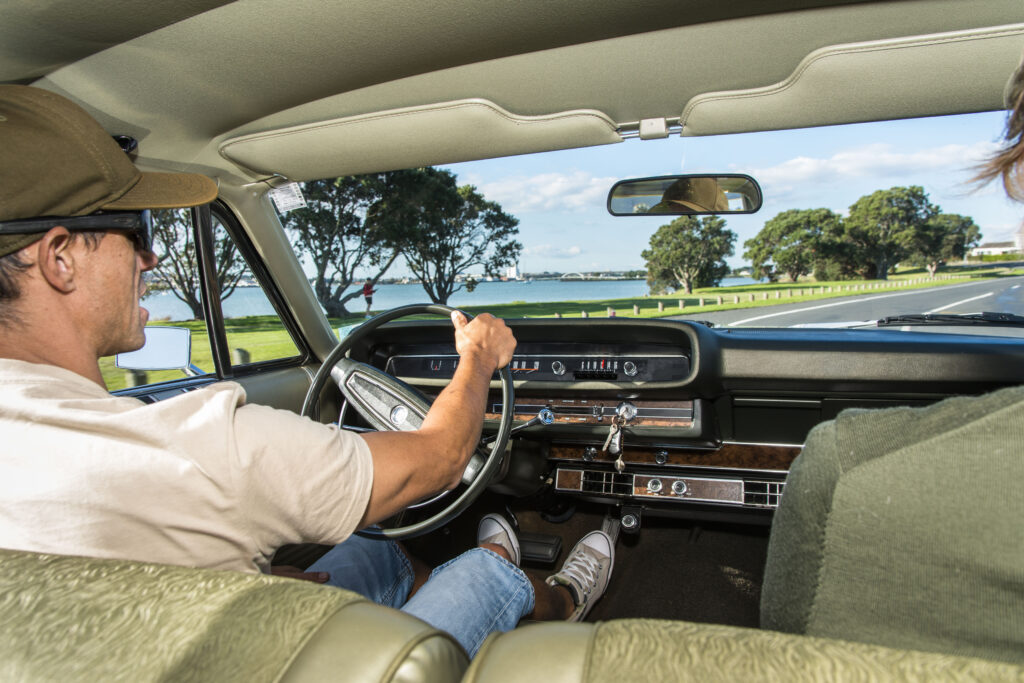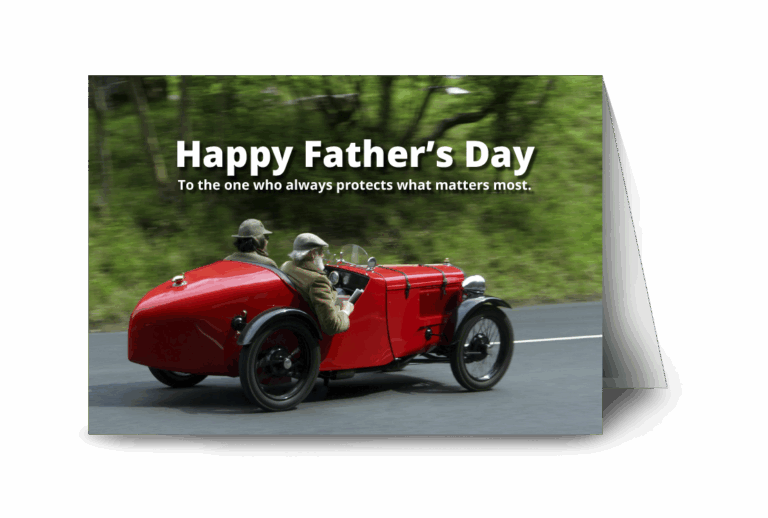There’s a version of this car that was a bona fide American muscle car. What appeals most about this car is that it is not one of them
By Ian Parkes
Photography: High Art Photography

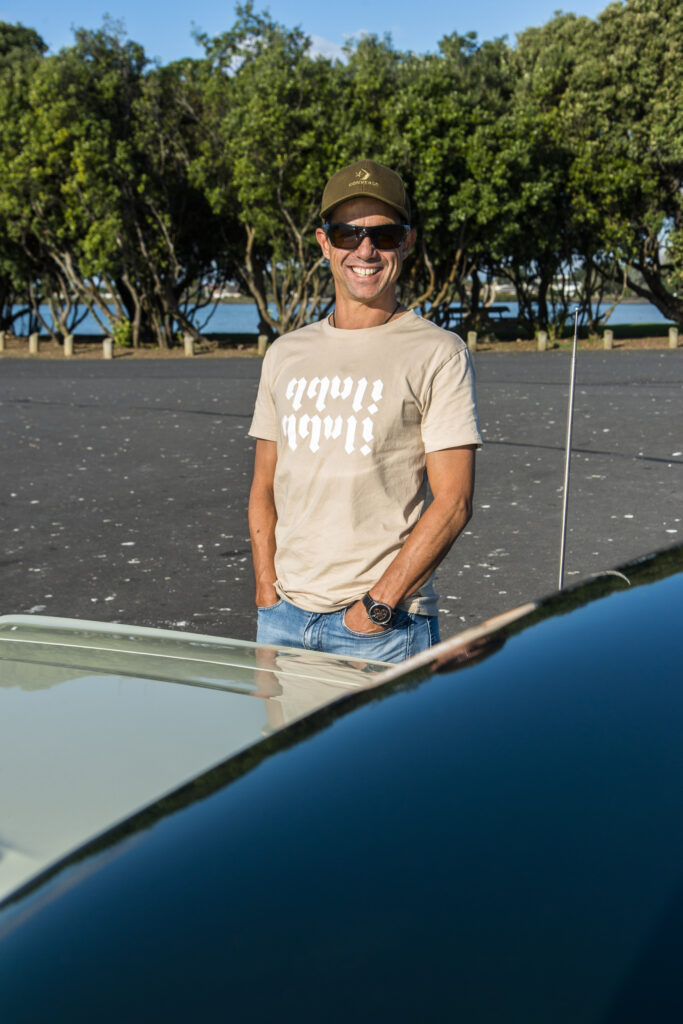
Ford’s Galaxie was a mainstay of the Ford brand throughout the 1960s. As a ‘full-size’ car, it competed most directly with Chevrolet’s Impala. It was never quite as flashy as the Impala, but maybe because it was a Ford, it sold in substantial numbers from 1959 through 1974.
Ford did everything it could to make a Galaxie for every need. When it was introduced in 1959 — with tail fins and a name designed to evoke the-then obsession with the space race — it came with both two-door and four-door sedans, and two-door and four-door hardtop (pillarless), a convertible, and with a retractable hardtop.
One year later, it got an all-new body, and to complement the Sunliner convertible version, there was a Starliner body, which had a vast wrap-around rear screen and a thin C-pillar.
The next year, 1961, it got another body redesign with only vestigial fins. The Galaxie name was applied across the range of Ford’s full-size cars, the 500 badge denoting a higher level of trim. The XL badge was introduced for bucket-seat versions, which apparently stood for ‘extra lively’, but it came to mean a higher trim level, and then a level above that became the top-of-the-line trim — the LTD.


Arms race
By the mid-’60s, adding power was becoming the favoured route to add sales pizzazz. Ford won 23 Grand National Nascar races in 1963 with the new, lower Sportsroof Galaxie and the new 427 engine.
The all-new Galaxie introduced in 1965, of which this car was the last version, saw no less than 10 engine options in its lifetime, from a 240ci six through to a 428ci, called the Thunderbird V8, although it was never used in a Thunderbird.
While its engines out-gunned the Chevy Impala versions, for most of its life, the Ford was heavier, penalising its street cred, and ultimately sales. Ford didn’t stop trying though, eventually in 1965 installing the most powerful engine ever to come out of Detroit, the Cammer 427. It put out 657hp when fitted with dual four-barrel carbs. It was almost untameable on the street, prompting Nascar to ban it, and Ford took the hint, stopping production after only a handful were made.
What’s remarkable about the Galaxies is how much the style varied. What appeared to be signature features — like the vertically stacked headlights in ’65-’67 cars — were gone with the next rebody; in this case giving way to a much simpler grille for this 1968 version.
Ford also changed tack in the mid-’60s. The muscle car game had moved on, and Ford now placed more emphasis on luxury and comfort. For 1968, the high-performance 425bhp 427 engine had been dropped; the base engine was the new 302ci V8, three versions of the 390 V8 offering up to 335bhp, and the cruising 428 for those that still wanted a 7-litre engine.
On top of the various trim levels, there was a dizzying array of options, including whitewall tyres, different hubcaps, air conditioning, remote control mirrors, power front disc brakes, tachometer, and limited slip differential.
Buyers could opt for a three-speed manual, a floor-shifting four for high-performance engines, or the Cruise-O-Matic three-speed auto, and then choose from 15 paint colours, and more than 30 upholstery options.
Ford offered the Mustang for the serious muscle car fans, but it had not given up on ringing the changes for full-size car fans, adding a fastback to the line. With a tyre-shredding 427 under the bonnet, this provided another option for muscle car fans that also valued imposing size. This cool new look made it one of the more popular Galaxies in 1968, and a good alternative to the usual suspects for muscle car fans today.

Wild or mild?
That wasn’t what the first owner of this car wanted. Ms Gladys Reddin of Austin, South Dakota, apparently wanted a comfortable, reliable, and good-looking car. She was clearly happy with her choice — she kept it for 48 years.
The two-tone colour scheme is a nice and restful Seafoam Green base with a Highland Green hardtop. It has a paint effect that suggests a vinyl roof.
“Everyone asks that until they take a closer look,” says its owner today, Brent Harris of Auckland. “They also ask if I’ve done the restoration myself, and I have to tell them no, it is 100 per cent original. It’s the paint listed in the handbook.”
It was the original condition of the car that won Brent over from the moment he first saw it — that and the fact “it just looks stunning”.
Brent had owned a 1968 Mark II Cortina for four years. It was in need of some work and the question arose whether to spend the money or get something different. You don’t get much more divergent than Ford’s different approaches to its markets in the UK and the USA.
Brent was encouraged in his quest by remembering a discussion with his wife ,Leanne, when they bought the Cortina. He asked if they should get a Cortina or a Mustang. Leanne had gone for the cheaper option then, but not long after she said perhaps they should have got the Mustang. So she wasn’t averse to an American car.
About two years ago, Brent was only idly checking what was available online when he saw this car and a Plymouth Super Bee offered by a Christchurch seller who wanted to sell one or the other of them.
Brent called him about the Ford, and the owner said he had only just listed it. Brent was intrigued that the car had only done 42,000 miles and had had one owner for 48 years, and it looked genuine. He looked up the car’s length online: 5.45m, and the length of his garage: 5.48. Cool, he didn’t have to move house. He quickly arranged a flight to Christchurch.
“I knew it was good but it was even better than I thought. I could hardly believe it.”
The seller had bought both cars in the US, but the Super Bee needed a lot of work for compliance, hence the decision to sell one of them. The condition of the Ford made the choice obvious to Brent and he knew Leanne would be just as pleased, so he bought the car and called her with the good news.

The original and the best
The car had had one more owner in the States who, judging by the stickers on the underside of the boot lid, took it to a few car shows in the US before selling it to the Christchurch owner. He owned it for just two years but had only done a couple of hundred miles in it before he took ill and decided to sell it.
I asked Brent if he had done any work on the car and if he had the original wheels. Brent said he had not done anything to it yet. He’s also considering his moves very carefully as he doesn’t want to compromise the originality. There are a couple of tiny dents in the bodywork on the rear wheel arch, and something pointy has been dropped on the boot lid, but none of the corners are crumpled, as you might expect with such a large car.
Those minor imperfections hardly detract at all, given the vast acreage of clean metal, appearing more as badges of authenticity.
Inside, the car is just as spectacular as the outside. There are no splits or warps in the deep and wide dash cowl. The brightwork — and there’s plenty of it — remains bright, and everything still works — air con, radio, power windows and power seats, and, of course, the cigarette lighter. It’s also capable of carrying four sets of golf clubs and four trundlers in the boot.
The bench seats have an iridescent vinyl and fabric covering. The fabric at the seams and in wear points is just beginning to give way. It is too frail to repair and it’s only going to deteriorate further, so this is likely going to be the first component to get attention. Brent says replacement kits in the exact same trim are available.


Putting on the Ritz
Brent also says it was the Christchurch buyer who put the car on the new wheels, so, sadly, he didn’t have the originals. That would have made a nice option, giving the car quite a different look. However, by the end of the shoot, the Rostyle wheels had grown on me. They have the right period style and add a bit of bling, which just serves to emphasise the car’s already sporty lines.
Brent is now very glad he didn’t buy the Mustang all those years ago. Apart from the fact this car is so much less common, he enjoys how quietly it gets about, which means he often sees people glance, and then do a double take as it rolls past. That’s a pleasure he says his friends with loud and showy cars won’t get as everyone can hear them coming a mile off.
This car is a real head-turner here, so it’s interesting to remember this was almost the definition of a mainstream car in its native America in the ’60s. If you weren’t going to be a bit alternative and buy a compact, this was a standard car. It’s possible to think Gladys wasn’t making a statement when she bought it. Perhaps she just thought it looked nice. It certainly met her needs for nearly 50 years.
To many classic car enthusiasts, the different extremes car design went to in this era after basic mechanical competence had been conquered made the ’60s possibly the car’s greatest decade. Plenty of people also revere the ordinary cars from many countries from that period, but the sheer size of America’s domestic models still makes them stand out in a crowd.
The ’60s took that to a new level. While cars from the ’50s were often of similar dimensions, what seems most characteristic of the ’60s today is that the wild swoops, curves, and fins had been flattened out, making the ’60s cars look even larger. What remained as the most memorable feature of most ’60s American sedans was the vast tennis court bonnets, or hoods, and equally generous boots (trunks). Even the indented grille and heavy ornamentation around the stacked headlights of the previous model Galaxie had given way in this car to a simpler aesthetic. The sides are similarly unfussy with just a strong swage line and the classic coke bottle hip to tie everything together — and the curves that bound the pillarless window virtually sum up ’60s American car design.
The luxury-length car looks just right, and those windows, the Rostyle wheels, and the two-tone paint in period colours make a nice counterpoint to the subtle shape, raising it right out of the ordinary.
‘I just love the looks and the originality,” says Brent. He says the car gets comments wherever he goes and many offers to buy it, but there’s no chance. He simply enjoys the car too much.



A Gladys night
He drove it up to Auckland from Christchurch and the car was such a comfortable place to be he just kept going and going. He was home in time for breakfast the next day.
He was intending to take the long way home, taking in some of the South Island’s sights, but a storm warning forced a change of plans. He did stop briefly in Kaikoura, which by chance, was hosting a classic car event. He was even followed into town by another Galaxie, a convertible. Talking to people at the show, they were “blown away” that the paint, the whole car, was original. “There was one guy who wanted to swap his vehicle for mine.” No deal. Brent was soon back on the road, heading north out of town, copping a few strange looks from people in other classic cars still on their way there.
The car’s special appeal worked its magic on the ferry, too. When Brent pulled up at the overnight ferry, the woman in the booking office asked if he wanted to go on first, ahead of the other cars. Then when he drove on he was waved into a special spot with no other cars close by.
Brent, a commercial construction manager, says he usually starts work at 4 am so it was no trouble to him to start the North Island leg in the early hours, after a couple of hours of sleep on the ferry. He hit Taupo as the sun came up, feeling he was almost home.
Certainly the car was designed to be comfortable on a long cruise. “Oh, it was.”
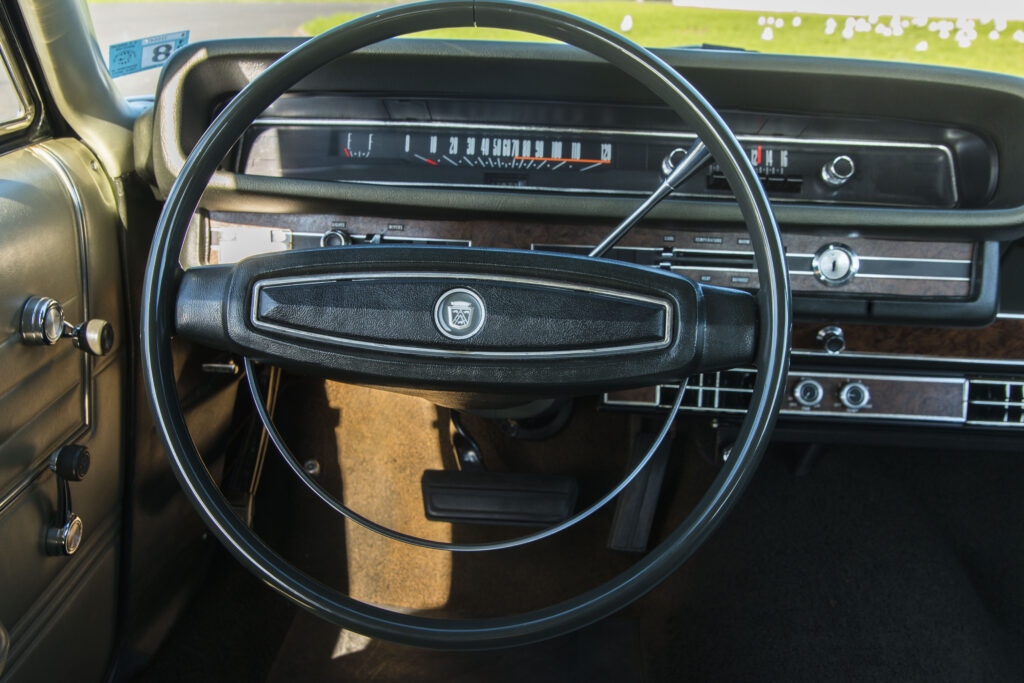


A real lady
If Brent liked his American Ford at the start of the journey, he was absolutely smitten with Gladys — named for her original owner — after driving through the night and early morning on his way home.
I asked if he’d have done the same drive in the Cortina. Brent rolled his eyes. “It was a whole other feeling,” he said. “It was a dream to drive back. It didn’t miss a beat, and everything worked — air con, demister, the works. I felt like I could drive it forever.”
But what about the corners in the bendy bits of the Desert Road and around Taupo?
“No problem. Absolutely fine.”
In fact, he says he now prefers left-hand drive. It makes it easy to position this wide car on the road, and, of course, it always feels a bit special.
We go for a short drive to a different photo location. I open the wide door and chuckle at the space available. Bench seats always look impractical but I sink into this one and it envelops almost like a bucket seat. There’s space for two between Brent and me. I see two belt buckles. There’s a lap belt but also a diagonal belt attached to the hood lining which can be fastened to the spare buckle.
As we take off, there’s a satisfying V8 rumble, but it’s not intrusive. On the road we encounter a series of speed humps. The car just floats over them, the bonnet rising like a boat riding up on a wave, then levelling again as if on the plane. Perhaps American suspension is better suited to modern New Zealand roads than I’d assumed.
It’s a very peaceful and pleasant place to be, the rich sheen of the green fabric toning in with the expanse of soothing Seafoam Green bonnet extending out in front of you. I can see why both Brent and the original Gladys were immediately content with this car.
Some classic cars are nice to own, and to look at. This car is also very nice to ride in. Brent says he drives it every chance he gets, on any sunny day, and Leanne is just as keen to be out in it too. He couldn’t say the same about the Cortina.

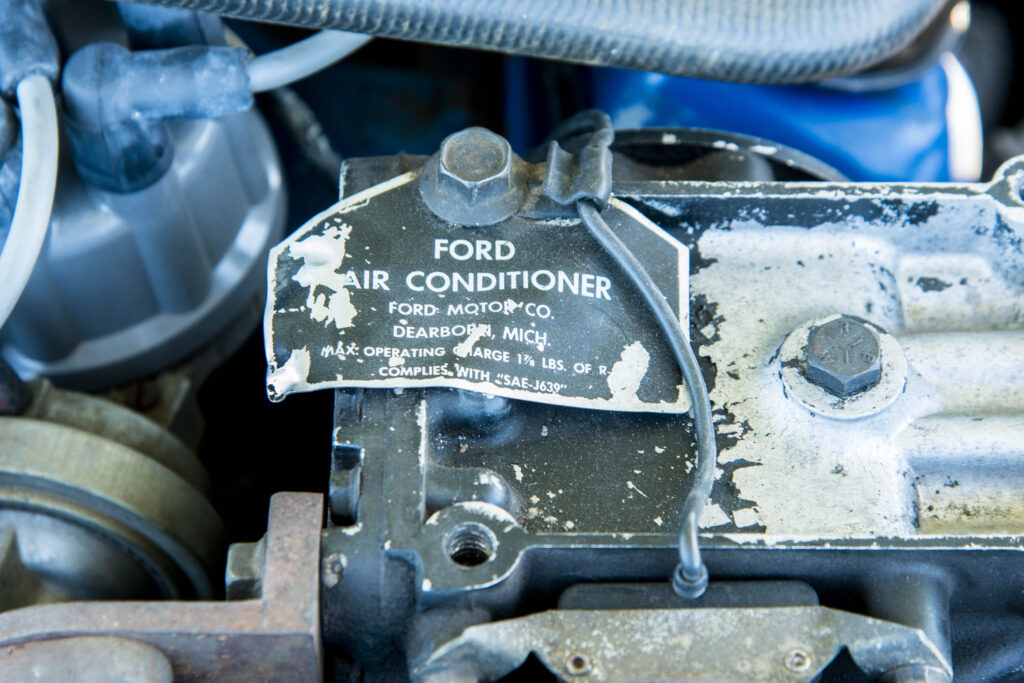
Specifications – 1968 Ford Galaxie 500 Hardtop
Engine – 301.6ci (4942cc), Windsor V8
Bore/stroke – 101.6mm/76.2mm
Valves – 16, two valves per cylinder
Comp. ratio – 9:1
Max power – 210hp (156.5kW) at 4400rpm
Max torque – 295ft/lb (400Nm) at 2400rpm
Transmission – Ford C4 three-speed automatic
Brakes – F/R 279mm drum (disc optional) /279mm drum
Dimensions:
Length – 5418mm
Wheelbase – 3023mm
Width – 1981mm
Track, F/R – 1575mm/1575mm
Height – 1387mm
Weight – 1708kg
Standard tyres 8.15-15
Performance:
0–100kph – 18.2s
Top speed – 170kph

